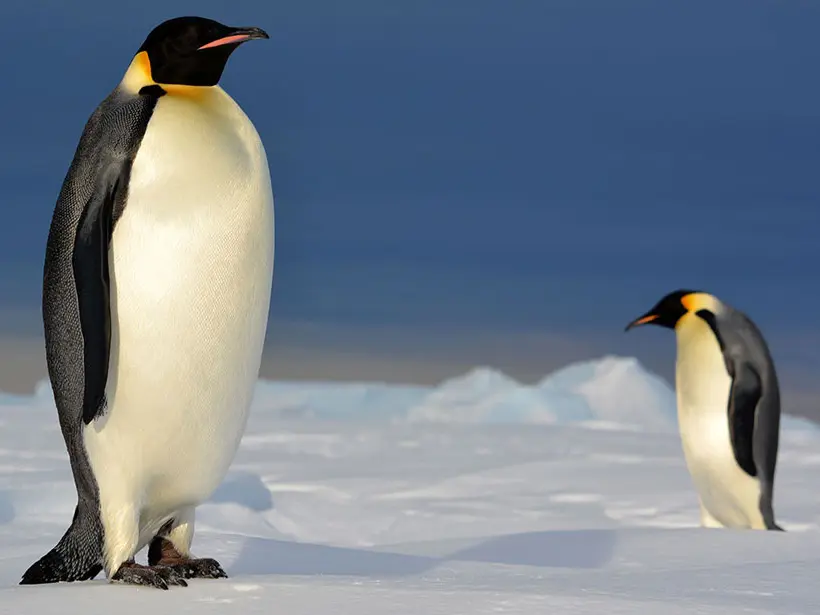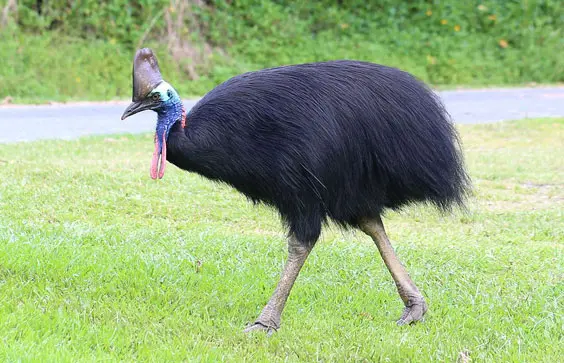If you’re looking for the Top 10 Biggest Birds in The World, then you are at the right place. In this article, we will discuss the Top 10 Biggest Birds in The World.
Most birds are petite and docile, and we often keep them as pets. However, there are also many birds in the world that are very large and ferocious, but this kind of bird is not very common. Do you know what is the biggest bird in the world? Today, we will give you an inventory of the top 10 biggest birds in the world. Let’s go and see the largest birds in the world.
Top 10 Biggest Birds in The World
10. Dalmatian Pelicans

Found in South Asia and Europe, they can grow up to 6 feet long, have a wingspan of nearly 9 feet, and weigh as much as 33 kilograms. The wings are large and the purpose is to fly. They are found in all habitats except in extremely cold and snowy regions. Pelicans are more sociable than other birds, travel in flocks, hunt cooperatively, and can live to be 19-25 years old.
9. Wandering Albatross

Wandering albatross is relatively large, with narrow and long wings, and their bills are relatively long and powerful, forming a downward hook at the end of the upper beak. Adult birds are generally more than 1 meter long, with wings spread up to 3-4 meters, and a weight of 8 to 9 kilograms. Male albatrosses are generally larger than females.
Most albatrosses live within the range of deep-sea regions in the Southern Hemisphere, and a few live in the North Pacific and equatorial regions. People usually see albatrosses on the sea or on rocky islands when they are sailing in the ocean. Near Antarctica, their main food is fish, cuttlefish, and shrimp there. They also feed on the waste discarded by the ship, so they sometimes fly with the ship.
Albatrosses can fly for long periods of time at sea, and they can use the principles of aerodynamics to glide across the sea very efficiently, sometimes for hours without flapping their wings. When an albatross can master the air currents on the sea surface, it can fly up to 2000-3000 meters at high speed in the air at will and can cross the sea surface of 113 kilometers in one hour.
8. Kori Bustard

Kori Bustard is a bird of the order Helicidae, Bustardidae, and the genus Bustard, native to southern and eastern parts of Africa. Wild in flat, open, dry prairie and shrublands. Named in 1822, a total of 2 subspecies. When calling, the air is sucked into the food bag first, so that the neck swells to four times the normal size, and after exhaling the air, a series of six-note calls are made, each note is separated by half a second, and the sound is shaken like a new banknote.
Body length 100-130cm. The wingspan of the male bird is 180-220cm. Male birds 10-19kg, female birds 5-6kg. The gray-necked bustard has a long neck with a crest on the head, gray-brown back, creeping neck and chest, white belly, black and white spot pattern on the shoulders and sides of the neck, and black and white stripes on the tail. Their beaks, legs, feet, and eyes are all yellow.
The best of the male gray-necked bustards is the ruler of the territory. When encountering other males of comparable strength, a fierce battle is inevitable. If the female gray-necked bustard accepts the male gray-necked bustard, she will approach it and squat down a few steps away from it. At this time, the male gray-necked bustard will walk over and ride on its back. The actual mating process lasts only a few seconds, and after that, the two go their separate ways. The female gray-necked bustard nests on the ground in the wilderness and lays 2 eggs per nest.
7. Mute Swan

Mute swans are also known as tumor-nosed swans, mute swans, red-billed swans, bright swans, etc. They are mainly distributed in Europe, North Africa, and central and southern Asia. It is called the mute swan because of the warty protrusion on its forehead. Their breeding season is from March to May, and the female lays about 4 to 9 eggs per clutch.
After laying the eggs, the female hatches them by herself, and the male acts as a guard. Mute swans will build their nests in the reeds or water grass near the water. Some dry reeds and other plants are the main materials for their nests.
Mute swans are larger, males are larger than females, with a body length of about 130 to 155 cm and a weight of about 6750 to 10000 grams. The color of the male bird is similar to that of the female bird, mainly snow white, with some light brown on the top of the head, and black eyes. Mute swans have tan irises, red beaks, and black feet and talons.
See also ”Top 10 Most Beautiful Birds in The World”
6. Turkey

Turkey, also known as the seven-faced bird or Tushou chicken, is a poultry native to North America. Turkeys are larger than ordinary chickens and can reach more than 10 kilograms. According to tradition, Americans cook a turkey on Thanksgiving and Christmas. Like other Galliformes, the female is smaller and less colorful than the male. With a wingspan of 1.5-1.8 meters, the turkey is the largest bird in the local open woodland, and it is difficult to confuse it with other species.
There are two kinds of turkeys: the wild turkey, which is distributed in North America, and the spotted turkey, which is distributed in Central America. The modern domestic turkey is derived from the domestication of wild turkeys by the indigenous peoples of Mexico.
This bird can eat food that other birds cannot. Its body is bigger than a crane, three or four feet long, its neck and feet are like a crane, its beak is red and soft, its fur is like a green sheep, its feet have two fingers, its claws are sharp, and it can injure people to death.
5. Rhea

Rhea is also known as the greater American ostrich. It is mainly distributed in South America. It is the largest bird in the Americas. Rhea has a body length of about 80 to 132 cm, a height of about 120 to 170 cm, and a weight of about 25,000 to 36,000 grams. Its shape is very similar to that of an African ostrich. Its legs and neck are very slender, and its back is curved. Although it has wings on both sides, it cannot fly. Rhea’s feathers are not all the same color, some are brown, and some are black and gray.
Rhea likes to live in sparse forests, bushes, and grasslands. They are social animals, and there will be one male and multiple females living together in a group. Their mating method is also one male and multiple females. The eggs laid by the female ostriches will be hatched by the male ostriches, and no animals are allowed to approach.
The stems, leaves, and fruits of some plants are the main food of rheas, but sometimes they also eat insects, mollusks, small reptiles, birds and mammals, etc. The stomping force of the rhea is so terrifying that dogs and other animals are often seen overwhelmed by it.
4. Emperor Penguin

Emperor Penguin is the largest individual in the existing penguin family, generally over 90 cm in height, up to 120 cm in height, and up to 50 kg in weight. It is distributed in Antarctica and surrounding islands. In the sub-Antarctic islands, there is a penguin that was previously considered the largest penguin.
Later, a large penguin was discovered along the coast of the Antarctic continent, which was a head taller than the king penguin, so it was named “Emperor Penguin”, “Emperor” means emperor, and this is the origin of the name “Emperor Penguin”.
The emperor penguin wears a black and white dress, with a reddish-orange beak, and a piece of orange-yellow feathers under the neck, which gradually fades downwards. The back of the ears is the deepest, and the color of the whole body is coordinated. On the Antarctic glacier, flocks of emperor penguins gather together, lively and orderly.
The golden sun illuminates the blue “palace” magnificently. Tens of thousands of emperor penguins are like subjects of a mysterious country, each wearing a black tuxedo and silver-white shirt and trousers, and a golden-red bow tie around their necks. , full of energy, calm demeanor, a gentleman’s demeanor.
See also ”Top 10 Unique & Rarest Birds in The World”
3. Emu

Emu can step on the national emblem majestically, thanks to the fact that it is the largest bird in Australia and one of Australia’s symbolic animals. Emu is one of the biggest birds in the world and one of the oldest bird species in the world. It is the only remaining species of the Emu family of the bird class Cassowary order.
Emu looks like an ostrich but is smaller, about 1.5 meters tall. The beak is short and flat, and the feathers are gray or brown. Wing degeneration, three toes, long legs, and good walking. Produced in Australian forests, it eats leaves and wild fruits. It is the largest bird after the ostrich and cassowary. It inhabits open forests and plains. Its feathers are underdeveloped, with slender pendulous feathers and well-developed secondary feathers. It has feathers on the head and neck without wattles
An emu’s daily food consists of grains, flowers, fruits, shoots, insects, larvae, or anything edible. They also swallow small stones to aid digestion. Although emus often eat the farmer’s crops, because they also like to eat the insects of the crops to make the crops grow better, Australian farmers love and hate them.
2. Cassowary

The cassowary, also known as the cassowary, lives on various Pacific islands, including New Guinea. This bird, which is called “devil-like” by the locals, is between 1.2 meters and 1.7 meters tall and can run at a speed of 50 kilometers per hour. It has three sharp toes like daggers, and its strong grip can allow it to jump up to 2 meters in the air.
Cassowary mainly feeds on tree fruit, especially the fruit that falls from the tree is more favored by a cassowary. They seldom eat meat, except when food is scarce, they will also peck some bugs and frogs. In normal times, cassowary will occasionally eat some broken glass and small stones to help digest food.
“The evilest bird in the world“, this title of the cassowary is well deserved. The cassowary has a pair of extremely sharp and large claws, with an average length of 12 centimeters, and there are three toes on the claws, each with sharp knife-like nails. Clawing these nails on other creatures is enough to kill them.
1. Ostrich

The ostrich (Ostrich) is native to Africa and is the existing herbivorous largest bird in the world. It cannot fly, but it is good at running. The weight of an adult ostrich is about 120-150 kg, and the body height is 1.75-2.75 meters. Ostriches grow very fast, and a one-year-old bird can weigh more than 100 kilograms. Under normal circumstances, ostriches can reach sexual maturity at about 2 years old.
The characteristic of the ostrich is that it is the biggest bird in the world. It has a slender neck and a small head. It has a short and flat triangular beak composed of several horny sheaths. The upper beak is stained yellow, and the lower beak is yellow. Slightly pink, brown eyes, large eyes, thick and short trunk, flat sternum, no keel protrusion, strong and powerful hind legs, very suitable for running, the body feathers of male birds are mainly black, and the body feathers of female birds are all gray-brown.
See also ”The Top 10 Biggest Animals in The World”



